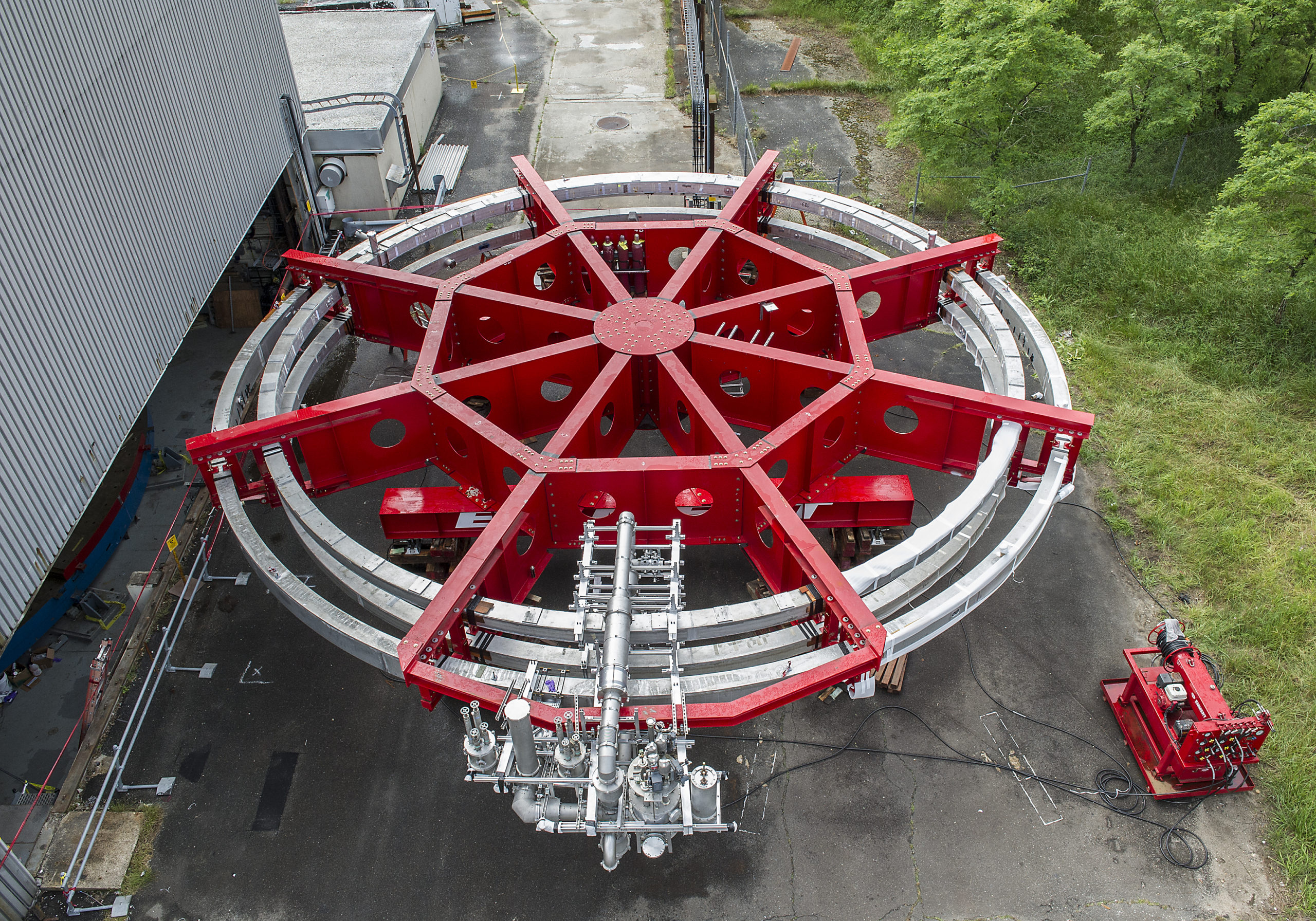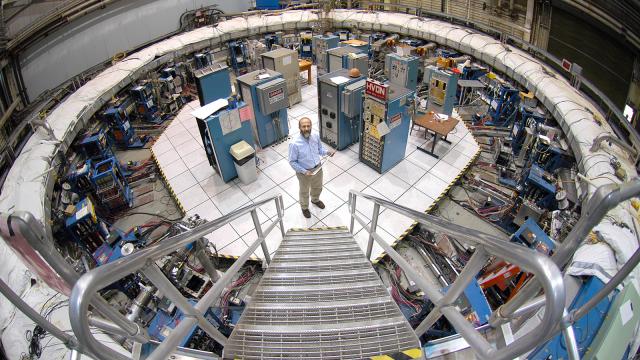Just because Fermilab shut off its famous Tevartron back in 2011 doesn’t mean the entire facility closed down with it. In fact, the Chicago-area physics lab is embarking on an auspicious plan to develop some of the world’s most powerful proton beam technology by the end of the decade. But first, researchers have to install a 15m diameter electromagnet shipped in from 4800km away and unlock the secret lives of elusive subatomic particles. No sweat, right?
Dubbed the Muon G-2 ring, this 15m wide steel and aluminium electromagnet originally resided at the Brookhaven National Laboratory where it helped produce the initial data that led to the identification of muons, rare subatomic particles with a shelf life of just 2.2 millionths of a second, in the 1990s. Problem was, the proton beam at Brookhaven wasn’t powerful enough to properly tease out the exact characteristics of muons, specifically their wobble.
See, when introduced into an electromagnetic field, muons will wobble slightly, like a top that’s losing momentum. Researchers were able to calculate out to six decimal places the precise value of the wobble but they what were seeing wasn’t dovetailing with what their calculations said they should be. There is a possibility, researchers concluded, that an unknown particle might be behind it but their underpowered proton beam caused huge margins of error and rendered the data statistically insignificant.
“Fermilab can generate a much more intense and pure beam of muons, so the Muon g-2 experiment should be able to close that margin of error,” said Chris Polly, project manager for Fermilab, press release. “If we can do that, this experiment could indicate that there is exciting science awaiting beyond what we have observed.”
That’s why Fermilab spend $US3 million shipping the ring from Long Island, New York, down around the tip of Florida via barge, and back up the Mississippi River to Illinois. The move was exceedingly slow with a top overland speed of just 16km/h — like moving the Space Shuttle through downtown LA were the Space Shuttle five lanes wide, weighed 15 tonnes, and couldn’t be allowed to flex more than 2mm without breaking. But it’s still cheaper than blowing $US30 million to build a new one onsite.
The ring arrived safely at Fermilab last Thursday, much to the glee of resident researchers and once operational could lead to the identification of dark matter particles, or at least explain why muon magnetism is always off from the mathematical model by a theoretical value of two.
“That difference with two arises because of the virtual quantum particles fluctuating in and out of the vacuum, so they appear and disappear, but they change the muon’s magnetism,” Bradley Roberts, a Boston University physics professor helping lead the Fermilab experiment, told the Chicago Tribune.

That’s where the new Muon g-2 ring comes in. It produces a very precise magnetic field, which will allow researchers to more accurately measure the muon’s wobble. But first, Fermilab technicians will have to produce a stream of muons. This is done by smashing clumps of protons, 1012 particles in each cluster, together 12 times a second into a fixed target. This process generates pions, which are then guided to the 14m diameter Muon Delivery Ring via a series of magnets until they finish decaying into muons. From there, the new muons are quickly shuttled over to the new 15m precision storage ring for observation.
As the Fermilab Muon G-2 experiment page explains:
When placed in a magnetic field, the muon — with its bar-magnet-in-miniature — precesses because of the torque the magnetic field exerts on the muon’s spinning magnetic moment. The muon’s g-value, is altered by particles that appear and disappear within the vacuum. So the muon precession rate is also altered, by the amount g-2.
The Standard Model of particle physics makes a very precise prediction of the muon g-2, accurate to 400 parts per billion. The purpose of the Fermilab Muon g-2 experiment is to make a measurement that is precise to 140 parts per billion. This is equivalent to measuring the length of a football field to a precision of one-tenth the thickness of a human hair. With this increased precision, scientists can compare the experimental g-2 measurement to the Standard Model prediction. The difference between the two values should provide an unambiguous answer to the question, Are there new, as yet unobserved, particles and forces that exist in nature?

“It could be a major discovery,” Fermilab spokesman Lee Roberts told the Tribune, potentially opening an entirely new field of particle physics. We’ll have to wait a bit to find out though. The magnetic ring requires another three years of setup and assembly before it can begin experiments, hopefully in 2016. [Fermi Lab, CBS Local, Chicago Tribune]
Top picture: Brookhaven National Laboratory
